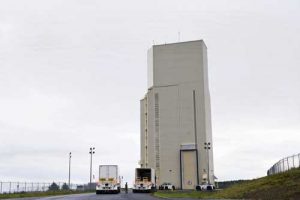
Washington, D.C. – Alaska Congressman Don Young, a member of the House Missile Defense Caucus, Tuesday applauded the successful U.S. Missile Defense Agency (MDA) intercept test of the Terminal High Altitude Area Defense (THAAD) element of the nation’s ballistic missile defense system, located at the Pacific-Spaceport Complex Alaska (PSCA) on Kodiak, Island.
“For years, intelligence reports have predicted North Korea would develop and test a ballistic missile capable of reaching the United States. Now that this day has come, we must be even more diligent and committed in our support for America’s missile defense shield, including numerous assets and technologies located in Alaska,” said Congressman Don Young. “Today’s successful MDA intercept test from Kodiak further provides the American people with a sense of safety and security in light of recent aggressions by North Korea. It’s a key example of our nation’s ongoing commitment to providing robust missile defense, ensuring our systems are properly tested and evaluated, and our space and launch infrastructure is well maintained. I commend the work and dedication of the MDA, the PSCA, our military men and women and all those that made this test an overwhelming success.”
Congressman Young is a longtime supporter of our nation’s missile defense systems and infrastructure. Over the past several years, he fought to bring the MDA back to Kodiak by including language in previous defense authorizations to enhance the capability of state-owned spaceports, like the Pacific Spaceport Complex-Alaska. Congressman Young is the recent sponsor of H.R. 2912, the Advancing America’s Missile Defense Act of 2017, legislation he introduced with Senator Dan Sullivan (R-AK) to address global threats through several means:
- Promoting an integrated, layered ballistic missile defense system incorporating THAAD, Aegis Ballistic Missile Defense, Aegis Ashore, and Patriot Air and Missile Defense Systems.
- Accelerating the development and deployment of a space-based sensor layer, and advanced interceptor technologies.
- Authorizing an additional 28 Ground-Based Interceptors and accelerating the completion of the EIS for an interceptor site on the East Coast and in the Midwest of the U.S. Missile Defense Testing.
- Authorizing additional missile defense testing and expresses the need to change current test culture at the Missile Defense Agency.
- Requiring a Department of Defense report on additional 100 Grand based interceptors distributed across the U.S.; specifics on their optimal locations; and studies on the possibility of transportable GBIs.[xyz-ihs snippet=”Adsense-responsive”]
